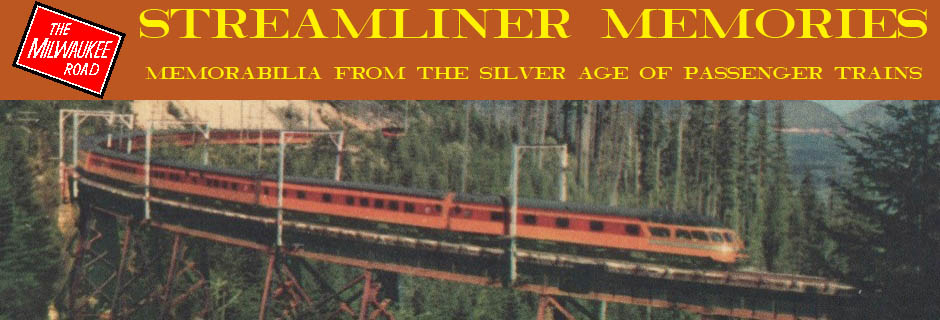Rail passenger ridership peaked in 1920 and started a steady decline thereafter interrupted only by World War II. Early buses were one competitor for rail riders, and more than two dozen railroads responded by starting their own bus companies in the 1920s. Some just offered local service feeding into their trunk rail lines, but many rail-owned bus companies competed directly against passenger trains for interstate and transcontinental business.
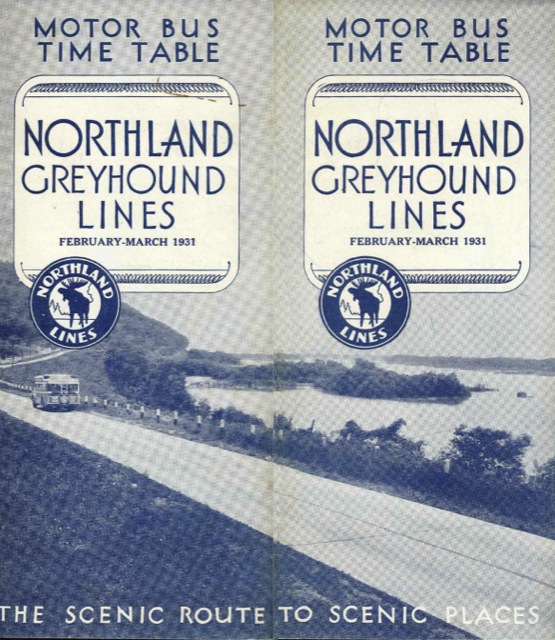
Unfortunately, I don’t have the entire timetable, but click the image to see a larger view.
More than a dozen rail-owned bus companies eventually became a part of Greyhound Lines. The original Greyhound was formed by the merger of several small Minnesota bus lines into Northland Transportation Company in 1924. For $240,000, Great Northern Railway acquired an 80 percent interest in this company in 1925; it changed its name to Northland Greyhound in 1926. Curiously, the company’s early logo wasn’t a dog but a moose encircled by the words, “Northland Lines”–suspiciously reminiscent of Great Northern’s Rocky Mountain goat logo, a version of which had been adopted by the railway in 1925.
The Greyhound name proved so popular that several other companies adopted it, usually by having Greyhound take an interest in those companies. Pennsylvania Railroad’s Pennsylvania General Transit Company became Pennsylvania Greyhound in 1936. Richmond, Fredericksburg & Potomac’s RF&P Transportation became Richmond Greyhound in 1930, with RF&P owning 49 percent and Greyhound 51 percent. The St. Louis Southwestern formed the Southwestern Transportation in 1928, which became Southwestern Greyhound in 1933. Southern Pacific formed Southern Pacific Transportation in 1929 which became Pacific Greyhound in 1930. New Haven formed the New England Transportation Company in 1925 which became New England Greyhound in 1939.
These arrangements allowed Greyhound to insulate itself from the failure of a single operator as well as attract investments from other companies. For example, Central Greyhound was formed by Greyhound itself as a vehicle for the New York Central to invest in bus service in its service area. Other railroads whose bus services were eventually taken over by Greyhound include the Baltimore & Ohio, Maine Central, and Spokane, Portland & Seattle.
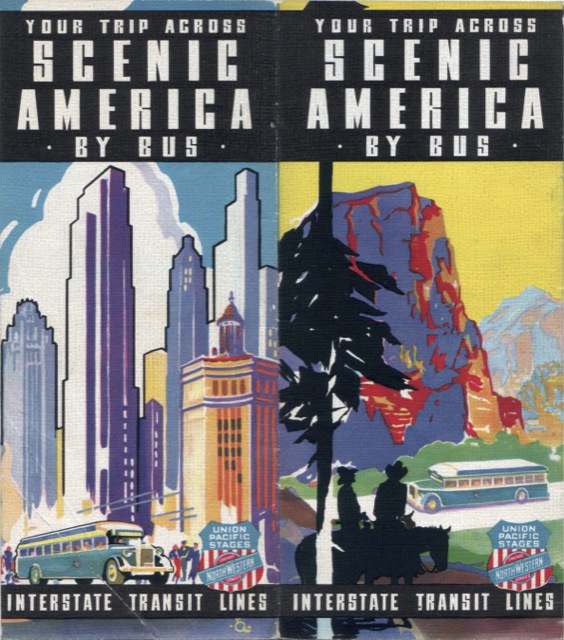
This brochure is undated, but is from sometime between 1929, when White introduced the model of buses shown in the pictures, and 1936, when rear-engined buses began replacing this style. Click image to download a 15.2-MB PDF of this 16-page brochure.
The story of Union Pacific Stages was slightly different. Together with Chicago & North Western Stages and a third company that the two jointly owned, Interstate Transit Lines, UP Stages formed a network that covered all major UP/C&NW routes as well as coastal routes paralleling Southern Pacific lines. (At least, those coastal routes are shown on a map in the above brochure; they could merely indicate connecting lines operated by Southern Pacific’s Pacific Greyhound.)
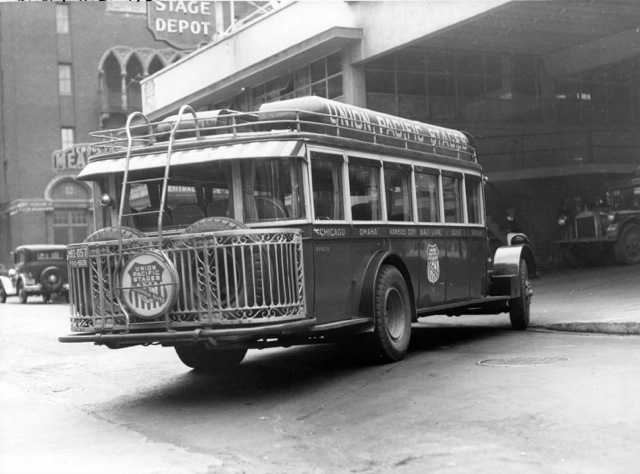
A UP Stages bus entering UP’s Portland bus terminal on Park Avenue, between Yamhill and Taylor, in 1933. Note that the logo says “Columbia River Route” instead of the usual “Overland Route.” The site of this bus terminal is today a city park. Click image for larger view.
In 1943, UP Stages and the other two companies began operating under the name Overland Greyhound. Sometimes called a “non-Greyhound Greyhound,” Overland was one of just two Greyhound operating companies in which Greyhound itself had no interest. The other, Southeastern Greyhound, was acquired by Greyhound in 1951, while Greyhound acquired Overland in 1952.
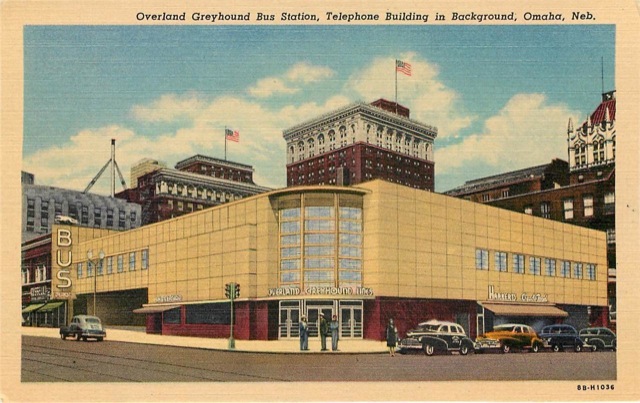
Judging from the automobiles, this postcard of the Overland Greyhound bus depot in Omaha is from around 1949. A slightly more recent card can be seen on Flickr. Click image to download a PDF.
